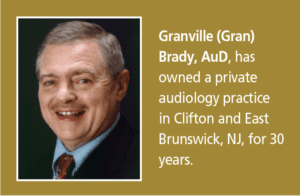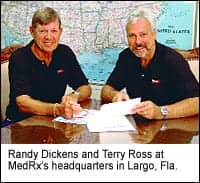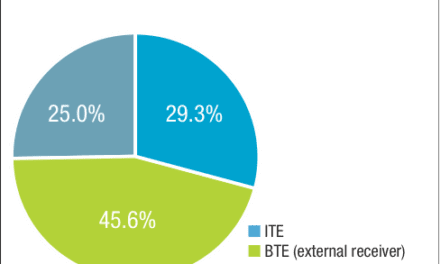Marketing: Generational Trends | Different age groups are driven by unique motivators | Hearing Review June 2014
By Granville Y. Brady, Jr, AuD
Anyone who has been in practice for more than a few years can see how generational trends influence buying patterns. While most patients being fitted for hearing aids were born after 1925 and before 1945 (Builder Generation), an increasing number of patients were born after 1945 and are commonly referred to as Baby Boomers.
A generation is roughly 15-20 years long. In order to understand how different generations view hearing health professional services especially hearing aids, it is necessary to define the generations and look at the social values each has in defining their generation.
Let’s begin with the Builder Generation, also called the Silent Generation, who were the babies born from 1925 to 1945. Now in their 70s and 80s, they comprise the largest group of hearing-impaired individuals, although they are not the largest group demographically. That distinction belongs to the Baby Boomers who were born between 1946 and 1964 and are now in their 50s and 60s. This is the target generation for hearing health professionals.
Unfortunately, if past trends continue, most patients will delay seeking help for their hearing loss an average of 7 years before they purchase amplification. So that would delay the entry of Baby Boomers into the market until they reach their middle generational years. We could expect that the influx of cases would begin in earnest in 2016. If trends of hearing aid purchases continued, there would be a steady increase in cases until around 2030 when the oldest Baby Boomers would be 86. As the Baby Boomer generation dies off, they would be replaced by Generation X (Gen X) born between 1965 and 1980.
Generational Motivators
Let’s look at what drives each of these generations. This is not necessarily what influences their buying patterns, but what they look for in choosing professional services.
Builders (b 1925-1945). First, the Builders born between 1925 and 1945 grew up under three authoritarian presidents: FDR, Truman, and Eisenhower. All three projected a fatherly image that required obedience. This generation looks upon doctors as experts. They tend to be more conservative and want their providers to look and act professionally.
Builders respond to marketing that is in print or on TV as opposed to the Internet. Although many own computers, relatively few have access to broadband, and they still like to read a newspaper. Marketing using print media and TV attracts their attention, although their children and grandchildren may try to influence their decisions based on electronic media.
They tend to make their decisions based on personal experience, including recommendations from friends, rather than brand loyalty. They want their doctors to act like doctors and are influenced by persuasion rather than a hard sell or advanced technology. Although this generation is not technologically inferior, its members want to know what products will do to enhance their lifestyle without all of the technological jargon.
Baby Boomers (b 1946-1964). The Baby Boomers are part of the largest population increase in the country’s history, with 78 million births compared to the 68 million born during the Builders generation of 1925-1945. As they matured, Baby Boomers are said to be the driving force in marketing everything from baby and child care books to adult care products.
Let’s see how these two groups, the Builders and the Baby Boomers, differ regarding healthcare. The Builders are conservative in buying goods and services. They want value and convenience and are not afraid to pay for it. They are particularly concerned that their needs will be met. They are loyal to providers that give them good value and services. This group above all comprises the most loyal patients. They like individual attention and shy away from large impersonal group practices.
In contrast, Boomers are rebellious and want to take charge of their lives. They research healthcare products and services on the Internet and select providers that can give them good customer service and variety. Aging to the Boomers is just another one of life’s transitions, and they don’t like the idea of “getting old.” While Boomers want attention, they are not afraid to buy things on the Internet if they feel that the items can provide good value at a lower cost. Boomers do not necessarily trust professional service providers and often seek a second opinion. Unlike Builders, Boomers are often shoppers without being buyers.
Practical Implications
How does the private hearing care practitioner work with each generation of patients? First of all, not everyone neatly falls into these classes. Some Builders act like Boomers and vice versa.
The hearing care professional who appeals to the Builder generation is most likely in a small practice. He or she identifies with service as opposed to a brand name or product line. Builders like to have things made simple for them, so the use of technological jargon and in-depth explanations of complicated features is to be avoided. Instead of marketing product, emphasize your experience in caring for the needs of patients. While testimonials may be effective, a better approach to marketing is through the patients’ physicians and patient referrals.
Baby Boomers reject the idea of aging, and hearing aids have a stigma associated with getting old. Marketing professional services is probably not as effective as promoting the benefits of amplification (especially if it is very discreet) in slowing down the aging process. Since this was a generation of rock-and-roll listeners, the Boomers often have a noise-induced component to their hearing loss that can be exploited in getting them in the door.
As the Boomers continue to work past normal retirement age, any perceived disability or impairment that affects performance is likely to receive their attention. The idea that hearing loss may accelerate cognitive dysfunction is an effective way to get Boomers to consider amplification. The keys to success with the Boomers are to realize that vanity and a fear of aging are prime driving forces.
Caregivers’ Influence
No study of generational trends in influencing buying patterns would be complete without looking at the influence of caregivers and professional referral sources on purchasers of hearing care professional services and hearing-related products (eg, hearing aids). Caregivers and professional care providers often have a greater influence over the patient than the sociological factors inherent in the patient’s generation. Caregivers are usually members of the family or nonprofessional workers, such as home health aides. Professional caregivers are traditional physicians, therapists, and sometimes members of the clergy.
To better understand how purchase decisions are made by the primary receiver of care (the patient), we should know a little about the people who have the most influence in making the decision. Absent from this group is the spouse who most often is a member of the same generation as the patient.
A generation is about 17 years long, and what we have done to influence a generation of caregivers 20-30 years ago might not be appropriate today. Both professional and nonprofessional caregivers a generation ago had vastly different ideas than the present generations.
Gen Xers (b 1965-1980). We now turn our attention to those who followed the Baby Boomers. Gen X (or Busters) are the 50 million people born between 1965 and 1980. Their present age range from 33 to 48 makes them people more likely to care for an older relative.
Although most of this generation does not live with the older patient, they often have influence over the decisions they make. Gen X is the first generation to espouse technology. They are comfortable with the Internet and make many of their decisions based on what they believe is true from their online browsing. This group is likely to research healthcare and is most likely to influence an older relative to buy hearing aids from a nontraditional source (eg, Internet or direct mail).
The best way to reach this group is by targeted-site advertising, keyword buys, e-mail outreach, or discounts supplemented by direct mail. While Baby Boomers still care for their Builder relatives, the Gen X group of caregivers is more likely to transport a relative to doctors’ visits and can influence the patient’s decision about what healthcare goods and services are available for purchase.
Professionals’ Influence
For a hearing care professional who began in practice 30 years ago, the professional referral sources have undergone phenomenal changes. More mature single practices are being swallowed up by large physician conglomerates that tend to practice medicine in a less personal way than the old family doctor of years ago. This has led to the erosion of traditional referral sources that a hearing care professional could rely upon for business.
In 2010, only 40% of practicing physicians were age 55 (Baby Boomers) or older. The rest were Gen Xers. However, a breakdown of the areas of practice showed that 62.5% of doctors in preventative medicine were aged 55 or older, with a low of 3.2% in internal medicine/pediatrics. The largest growth in specialty was internal medicine. Geriatric medicine also experienced a surge, increasing 71.6% from 2000 to 2010.
This suggests that more doctors, especially older ones, are turning to geriatric medicine. Hopefully, this is the group that is likely to refer for hearing care professional services if they are made aware that the services exist.
The trend to geriatric medicine seems to be holding steady. The largest group of residents/fellows with an international medical degree specialty in 2010 was in geriatric medicine. This means that more doctors are coming into the field who are Generation Y/Millennials who value technology but tend to disbelieve any claim until they have verified it. This is the group of physicians who would be motivated by high-tech hearing care professionals using the most advanced hearing aids and Speech Mapping to verify and validate the fittings. The Millennial doctors respond to e-mails as opposed to voice mail; messages about preventative treatment (eg, the relationship of amplification to enhanced cognition); and marketing that is clean and easy to digest.
How does the hearing care professional market to these different generations of doctors? The Baby Boomer doctors still like personal visits or calls. They want contact with their referral sources with written and verbal reports of their patient’s progress. This is the last group that will get to know their patients on a first name basis.
With the trend to consolidations and large group practices with more demands for productivity, the personal relationship with patients is likely to change drastically. Gen Xers are less likely to want contact from their referral sources as well, and Millennials are probably the least likely to develop a personal relationship. The Millennial doctor would prefer to have CEUs delivered by distance learning, and that creates the need for hearing care professionals and hearing aid manufacturers to reach out to the future generation of professional caregivers through electronic media (Facebook, webinars, blogs, and whatever new ideas will come along to facilitate learning without having direct contact with other humans).

References
Cassling. Generational Marketing in Health Care. Omaha, Neb: Cassling. Available at: http://www.cassling.com/post/sections/6/Files/WP_Generational_Mktg.pdf
Mccrindle Research. Generations defined. Available at: http://www.mccrindle.com.au/BlogRetrieve.aspx?PostID=306455&A=SearchResult&SearchID=7295989&ObjectID=306455&ObjectType=55
Association of American Medical Colleges. 2012 Physician Specialty Data Book. November 2012. Available at: https://members.aamc.org/eweb/upload/2012%20Physician%20Specialty%20Data%20Book.pdf
Correspondence can be addressed to Dr Brady at: [email protected].
Original citation for this article: Brady, GY. How generational trends influence buying patterns: consumers, caregivers, and professionals. Hearing Review. 2014;21(6):32-34.





